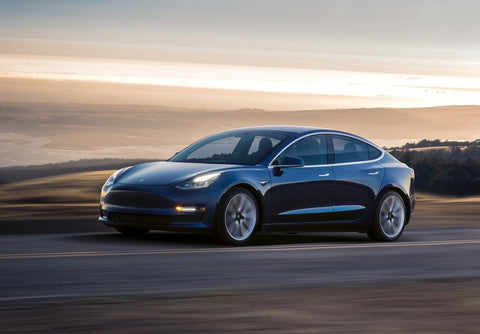For EV drivers, DC fast charging (Level 3 Charging) is attractive to anyone who can't necessarily charge their car's battery at home or their workplace conveniently using a Level 2 charger. With DC fast charging, EV-drivers can extend their battery range and even reach up to 80% capacity (200 miles) in as little as 30 minutes.
DC fast chargers (often called "Level 3" chargers) are most commonly found in public parking spaces such as those in shopping centers, gas stations, business lots, and rest areas.
What are the Benefits of Level 3 Fast Charging?
While the vast majority of EV-drivers charge at home on a Level 2 device, fast charging is very useful for EV drivers who need to add range in order to complete a long trip or who don't have access to a Level 2 charger at home, work or while on vacation. Level 3 stations play an important role in the e-Mobility infrastructure, and provide EV drivers with a recharging experience similar to what they would do at gas station.
Understandably so, fast charging appeals to the majority of EV drivers and is helping convert more and more people to make the switch from internal combustion cars to electric vehicles. The ability to stop for 25-30 minutes and add over 150 miles of range to your battery is a game changer for the e-mobility movement.
What are the Potential Downsides?
When it comes to optimizing the performance of your EV, most experts recommend limiting the amount of Level 3 fast charging you utilize, as overuse can affect the longevity of your car's battery.
"Fast charging wears out the battery a bit faster than regular charging," says TurnOnGreen CEO and Chief Engineer, Amos Kohn, "It reduces battery life and over time...it will drain faster. The main reason for this is because the chemical reaction of electrons moving faster between the battery cathodes will also generate high heat and may affect the composition of the battery."
Known Effects of Frequent Fast Charging
When it comes to all-electric or hybrid vehicles, their ability to accept higher charge currents is affected by the battery chemistry. The overall consensus in the car manufacturing industry is that faster charging "will increase the rate at which an EV’s battery capacity will decline," according to an article published by MyEV.com.

On the other hand, researchers have concluded that while an EV’s battery may deteriorate more rapidly should the owner rely too heavily on Level 3 Fast charging rather than a 240-volt "Level 2" station, the difference in lifetime performance is not pronounced enough to discourage frequent use altogether.
Through a study at the Idaho National Laboratories (INL) prepared for the U.S. Department of Energy, it was found that the difference between the battery deterioration from four identical 2012 Nissan Leaf EVs that were charged either entirely with Level 2 chargers or Level 3 fast chargers was around 3% over the course of a year. It is important to also keep in mind that the vast majority of Level 3 users do not use it exclusively, so the difference in their comparative rates of deterioration would likely be even less in actual practice.
To summarize, fast charging in excess isn't the best for your battery, but it's up to the individual to weigh the risks against the major benefits of these premium Level 3 charging solutions.